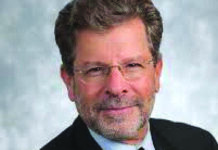
By Zev Eleff
On Jan. 11, the McMinn County Board of Education in Tennessee voted to remove Art Spiegelman’s Pulitzer Prize-winning graphic novel from its eighth-grade language arts curriculum. Spiegelman’s “Maus” depicts the author’s interviews with his father, a Holocaust survivor. The illustrations present Jews as mice and Germans as cats.
The Tennessee school board’s rationale was that “Maus” contains within it “unnecessary use of profanity and nudity and its depiction of violence and suicide.” The final two points center on a small but provocative panel in the comic. In it, Spiegelman drew his mother, dead and naked in a bathtub.
The board determined that the graphic novel was “simply too adult-oriented” for its eighth-grade classes and apparently for any other grade level. The board reiterated its commitment to Holocaust education and hoped that its teachers could find a “more age appropriate” alternative to Spiegelman’s critically acclaimed graphic novel.
The trouble is that finding a replacement for “Maus” is difficult. Teachers who assign the graphic novel in their classroom ensure that through Spiegelman’s memoir their students receive a full “dosage” of Holocaust education. Through its pages, “Maus” relays the historical facts of the Holocaust and the depth of Jewish suffering during that nadir of European civilization.
Tennessee is among the 22 states that mandate Holocaust education in public schools. Like most of the others, Tennessee offers curriculum standards. A 2021 report furnished by Arizona State University showed that states by and large leave it to the schools to determine the duration and intensity of the teaching.
Tennessee’s guidelines read like most others in the American public school arena: “Explain the state-sponsored mass murder of the Jews in Nazi-controlled lands, and describe the varied experiences of Holocaust survivors and victims.” This can be accomplished in a short set of lesson plans, or it can occupy a much larger swath of classroom time. Inserting “Maus” into the curriculum assures that Holocaust education reaches a satisfactory dosage.
Then again, there’s no doubt that Spiegelman’s work is provocative. I suspect that an unmentioned factor in the McMinn County board’s evaluation of “Maus” was Spiegelman’s postmodern art design, a style he explained at a Gratz College Holocaust education event in March 2021 was first introduced to him through Mad magazine in the 1950s. The cartoonists for Mad drew with a subversive touch, anticipating the counterculture of the 1960s.
Spiegelman’s cartoons are dark and edgy. His lettering — his placement of words in the comics — is also intentionally tense. Consider, for example, the page with which the Tennessee school board took the most issue: the cartoonist’s mother’s suicide. To convey his conflicting emotions and grief, Spiegelman’s jarring drawings are framed on the page around large black letters that read: “Menopausal Depression,” “Hitler Did It!” and “Mommy.”
I suspect that the full presentation of the art, taken together, rather than the individual parts — harsh language, unsettling cartoon style, a solitary nude panel and mention of suicide — was what had set off the oppositional board members in mid-January.
Several McMinn County educators defended “Maus” in all its postmodernism. One assistant principal posited at a school board meeting that all teaching materials on the Holocaust are gruesome: “There is nothing pretty about the Holocaust and, for me, this was a great way to depict a horrific time in history.”
The two sides represent an important debate about Holocaust education. According to the first view, Holocaust education ought to be focused on “cultural literacy.” Students must obtain knowledge about the Holocaust and keep the memory of Nazi terror in circulation. Educators should deliver this curriculum with appropriate teaching tools.
The counterpoint argument is that Holocaust education is in fact about being provocative. The confrontational aspect is one of the key ingredients in the value proposition of Holocaust education.
In September 2020, Echoes and Reflection — a partnership program between ADL, USC Shoah Foundation and Yad Vashem — released findings of a survey that asked 1,500 U.S. college students about the impact of Holocaust education. Those who received Holocaust education also, claimed this report, possess more pluralistic attitudes and openness to different opinions and different people. This change takes place, I suggest, because “there is nothing pretty about the Holocaust.”
No doubt, both sides of the Holocaust education debate are eager to see improved Holocaust literacy and for students to become more open-minded because of that education. Still, there is a stark difference in pedagogical emphasis.
Policymakers and community stakeholders look to Holocaust education to cause a controlled amount of confrontation. They view it as an important intervention to combat antisemitism and address other brands of human hatred.
Education leaders can debate whether Holocaust education is the appropriate antidote to combat contemporary hate and make suggestions on how educators might broaden the curriculum. Until then, it seems to me that eliminating “Maus” from the syllabus removes a very valuable tool to provoke thought and ensure that our students receive a satisfactory dosage of learning on this all-important subject.
Zev Eleff is president of Gratz College and a scholar of American Jewish history.






